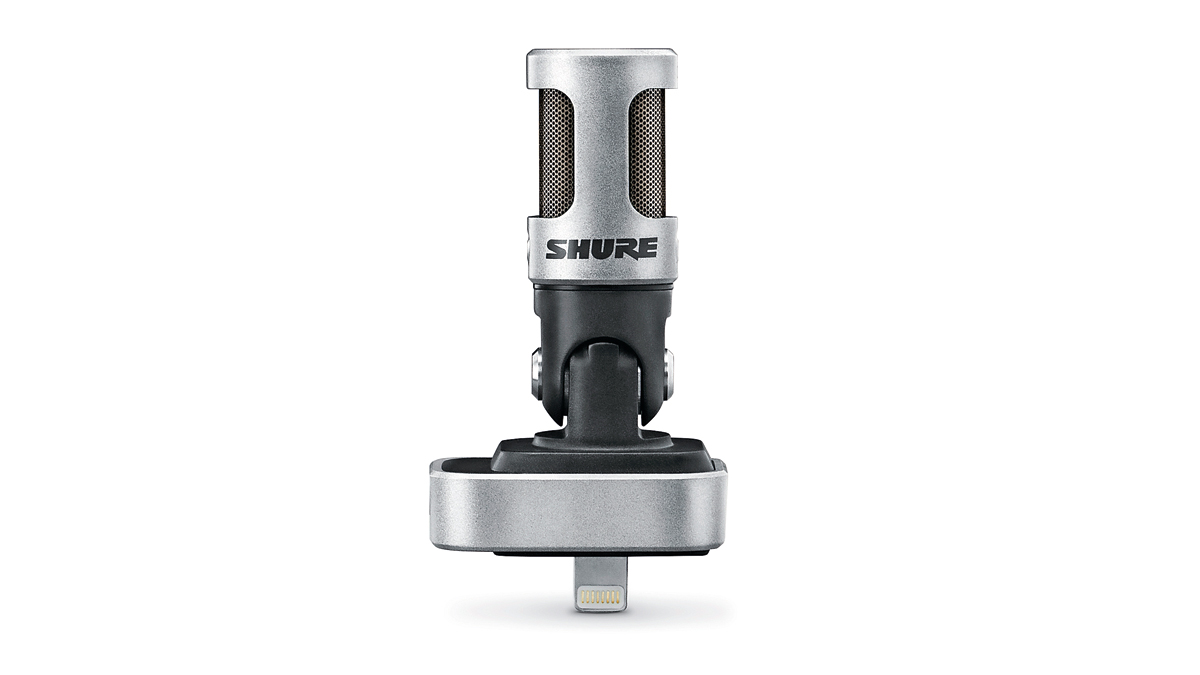MusicRadar Verdict
An impressive microphone for your mobile.
Pros
- +
Impressive stereo options. Quiet operation.
Cons
- -
None.
MusicRadar's got your back
The MV88 is a stereo condenser mic that plugs straight into your Lightning equipped iPhone, iPad or iPod touch.
It has two 1cm capsules in a mid-sides configuration, with 90 degree hinge and rotation of the overall capsule.
The mic incorporates AD conversion (16-bit/44.1kHz or 24-bit/48kHz) but no headphone output, and needs Shure's free MOTIV app (iOS 8) for proper use. This provides adjustment of mic gain, mic pickup pattern (stereo, mono cardioid, mono figure 8 and raw mid-side) and M/S balance for the stereo option.
There are also five DSP presets (as per MV51), an LF cut to reduce wind noise, L/R channel swap, and basic processing (EQ, limiter and compressor).
The MV88 has a detachable foam windshield, and the whole kit is stored in a super-compact, black zip case. In use you'll notice it's much quieter than your inbuilt mic, and the stereo options are impressive. Nevertheless, basic cardioid operation is there should you need it.
- Best field recorders: top portable recorders for capturing sound on-the-go
Want all the hottest music and gear news, reviews, deals, features and more, direct to your inbox? Sign up here.
Jon is a London based platinum award winning mixer, producer, composer and club remixer with a diverse CV that spans dance, pop, rock and music for media. He’s also a long term contributor to MusicRadar's music technology tutorials and reviews. Whether working alone or collaborating he usually handles final mixdowns, so you’ll also find MusicRadar peppered with his handy mixing tips.

